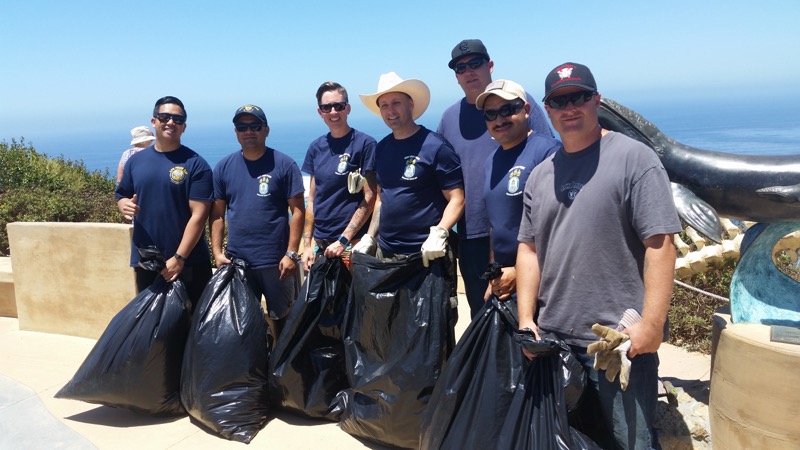 NPS Photo - Navy crew working on grasses at Whale Watch Overlook
NPS Photo - Navy crew working on grasses at Whale Watch OverlookWeed Warriors is the name given to those that help with the invasive species removal at this park. The group includes individual volunteers and organizational work crews. They might come in to work one time or make a commitment to come in on a regular basis. Some Navy groups have made a commitment to come in on a specific schedule throughout the entire year.
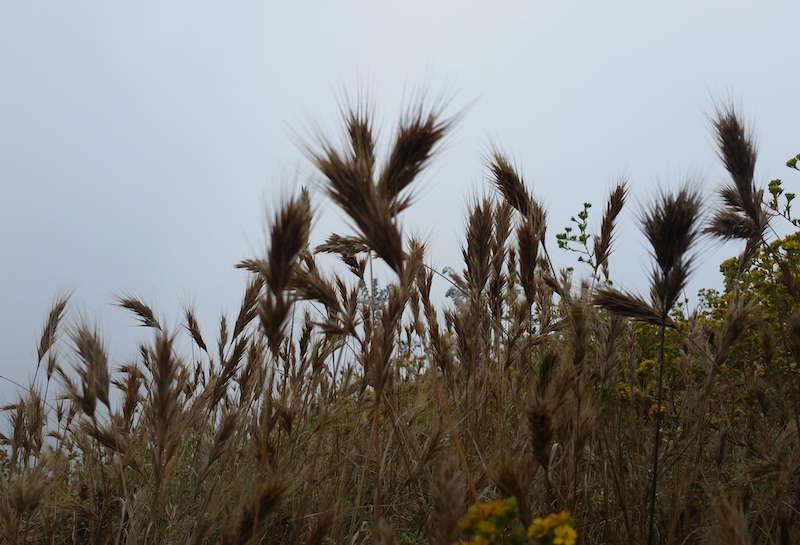 NPS Photo - Foxtail, Bromus madritensis
NPS Photo - Foxtail, Bromus madritensis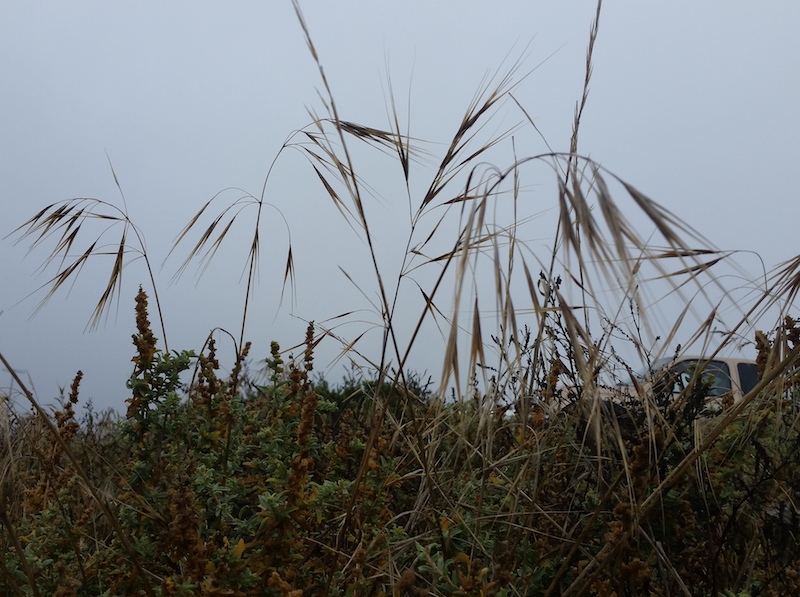 NPS Photo - Ripgut, Bromus diandrus
NPS Photo - Ripgut, Bromus diandrus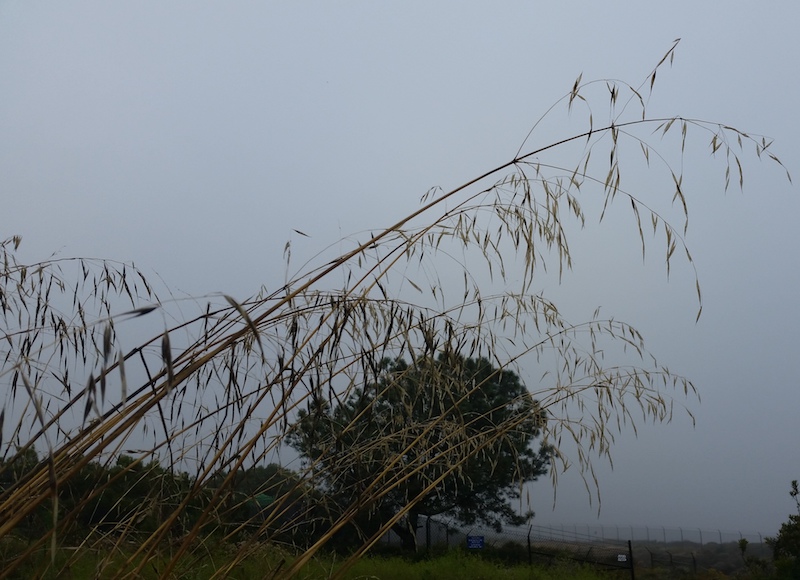 NPS Photo - Wild Oats, Avena barbata
NPS Photo - Wild Oats, Avena barbataTo be able to be a Weed Warrior each person must go through training on plant identification and removal techniques. They start off on the easiest to spot plants. Grasses are usually the most obvious species to identify. Foxtail, Bromus madritensis, is one that can be identified and removed with confidence. Once someone feels comfortable with Foxtail they learn Ripgut, Bromus diandrus and Wild Oats, Avena barbata. The heads of these grasses can be easily distinguished from native grasses. There are two other major plant families that we often use Weed Warriors to help remove.
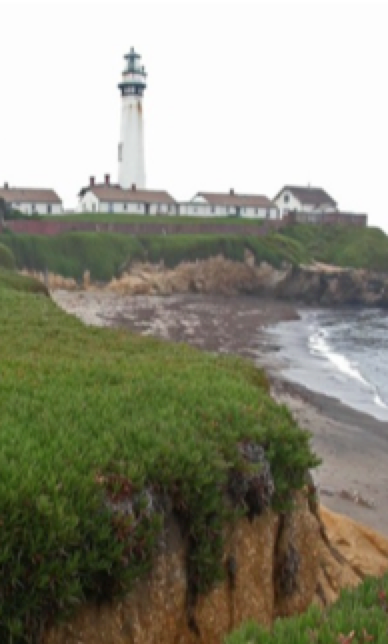
NPS Photo - Historic picture of Iceplant carpeting cliffs.
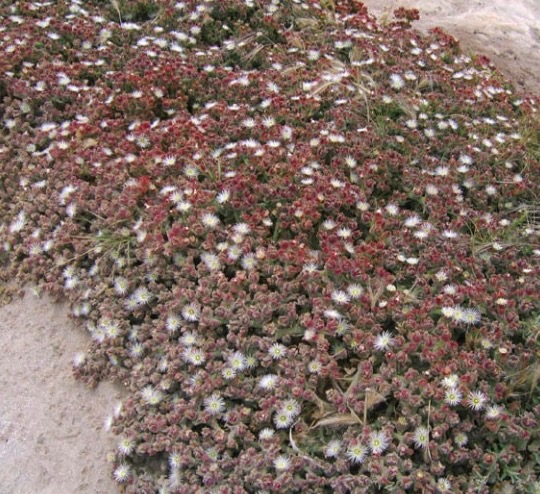 NPS Photo - Carpet of iceplant
NPS Photo - Carpet of iceplant
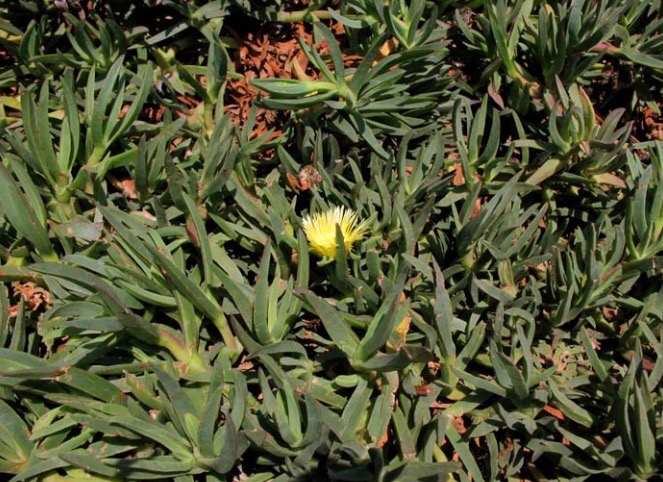
NPS Photo - Fig Leaf, Carpobrotus edulis
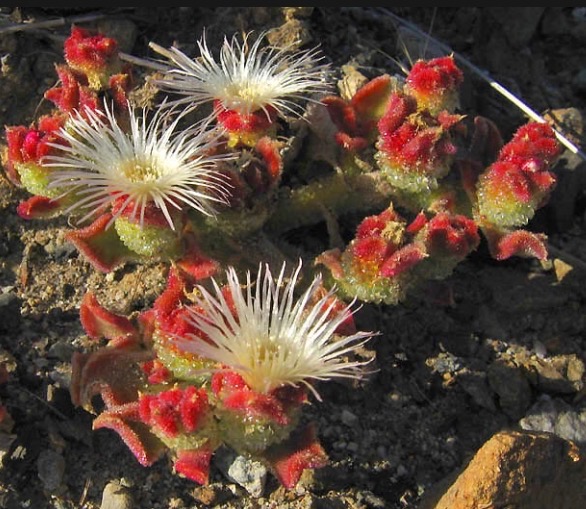
NPS Photo - Sea Lettuce, Mesembryantemum crystallinum
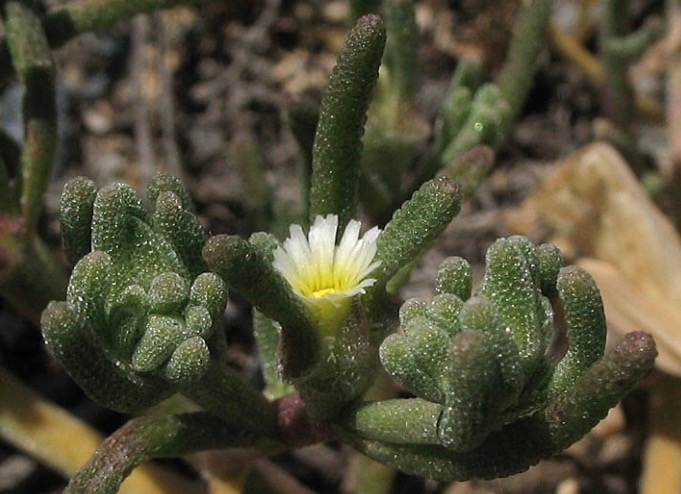
NPS Photo - Slender-Leaf, Mesembryanthemum
Historically volunteers have helped remove different types of Iceplant. There are several species of this plant found in the park. Fig Leaf Iceplant, Carpobrotus edulis, was a huge problem in the park. This is the plant that is often found along the roadsides. It was brought over from South Africa because it roots and grows quickly and maintains a lot of water content. The thought was that it would prevent erosion and work as a fire break. When properly maintained this can be true. When it is left to grow on its own it becomes extremely invasive. This plant can grow up to five feet a year. It grows over and through everything in its path and consumes all the water, sunlight and nutrients of the plants it meets. Most of the large patches of this plant have already been removed. The second species of Iceplant growing at Cabrillo is Crystalline Iceplant or Sea Lettuce, Mesembryantemum crystallinum. The leaves of this species can grow to the size of a dinner plate. It takes over habitat, the weight of it literally squishing any plants present, and it steals the things that other plants need to grow. The last two types can be seen blanketing the ground at Cabrillo now. These are Slender-Leaf Iceplant, Mesembryanthemum nodiflorum and Coppery Mesembryanthemun, Malephora crocea. Both are smaller in leaf structure than the first two types of Iceplant.  NPS Photo - Carpet of iceplant
NPS Photo - Carpet of iceplant
NPS Photo - Fig Leaf, Carpobrotus edulis

NPS Photo - Sea Lettuce, Mesembryantemum crystallinum

NPS Photo - Slender-Leaf, Mesembryanthemum
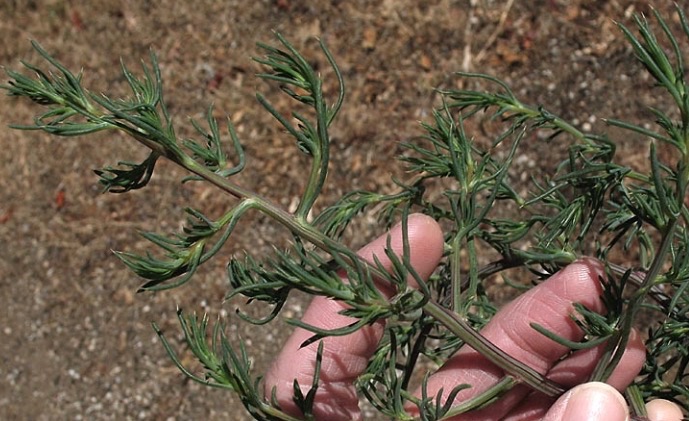
NPS Photo - Russian Thistle seedling
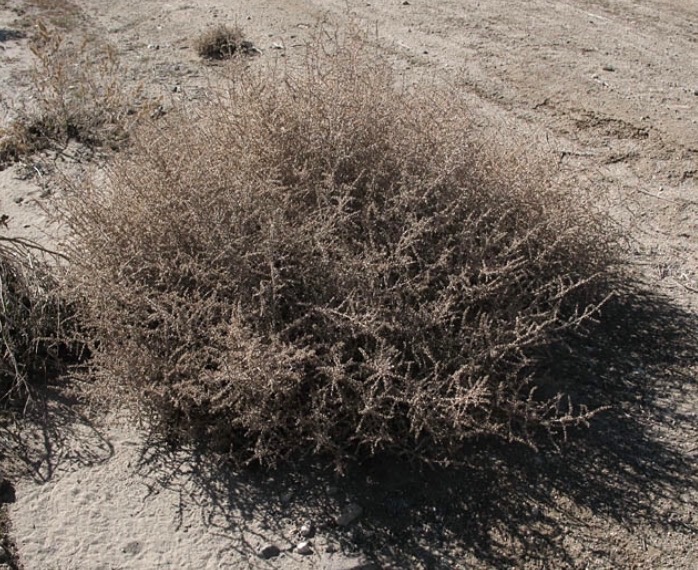
NPS Photo - Mature Russian Thistle about to become a Tumbleweed
The last species that Weed Warriors are making a big impact on right now is Russian Thistle, Salsola spp. This is the plant that grows up to become a Tumbleweed. When small this plant is fairly easy to remove, but as it matures it is quite difficult to handle both because of its root system and due to the prickliness of its spines. The wind can blow the Tumbleweeds throughout the park, thus spreading the seeds as it rolls. Catching the plants when they are still rooted to the ground is essential to stop the spread. Over the past few years the Navy work crews have made a large dent in the amount of Russian Thistle in areas of the park.
The removal of invasive plants increases the chances of the native insects, reptiles, mammals, birds and sea life being able find the habitat that they need to prosper. The collaboration of the military and civilian volunteers has helped restore major sections of the park to native habitat. The battle of the Weed Warriors often goes unnoticed by the public, but it is key to the survival of the natural resources here at Cabrillo National Monument.
